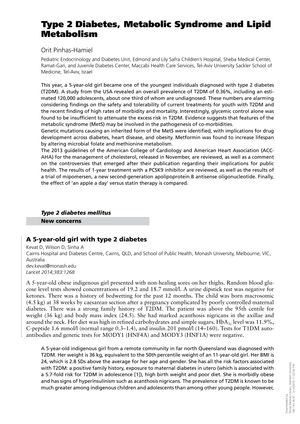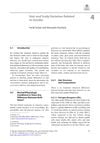Type 2 Diabetes, Metabolic Syndrome, and Lipid Metabolism
January 2014
in “
S. Karger AG eBooks
”

TLDR Type 2 diabetes in youth is increasing, with high treatment failure rates and more severe than Type 1; certain drugs can lower lipid levels effectively with varying side effects, and apples may benefit heart health like statins but with fewer side effects.
The document from 2014 discusses the prevalence, risks, and management of Type 2 Diabetes Mellitus (T2DM) in youth, with a study indicating a 0.36% prevalence among adolescents in the USA and a high rate of undiagnosed cases. The TODAY clinical trial with 699 obese 10- to 17-year-olds showed that while treatments like metformin plus rosiglitazone were safe, there was a high rate of treatment failure. T2DM was found to be more hazardous and lethal compared to Type 1 Diabetes Mellitus (T1DM), with higher mortality rates and complications. The document also explores the role of metformin in lifespan extension, a mutation in DYRK1B associated with Metabolic Syndrome (MetS), and the relationship between cortisol levels in hair and MetS. A study on prolactin levels in obese children suggested that prolactin could be a metabolic risk marker, with lifestyle interventions improving metabolic parameters. The document also reviews the 2013 ACC/AHA cholesterol guidelines, which recommend wider statin use, and the impact of mipomersen and evolocumab as lipid-lowering therapies. Mipomersen showed significant lipid reduction but had a high dropout rate due to side effects, while evolocumab was effective in reducing LDL-C levels with a low incidence of adverse events. Lastly, a humorous modeling study compared the effects of a statin a day to an apple a day on vascular mortality, suggesting that apples might offer similar benefits with fewer side effects.


